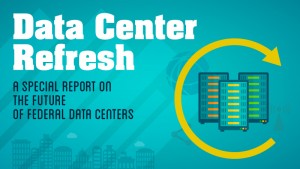The key to data center consolidation success is communicating and committing to an aggressive plan, according to Department of Justice (DOJ) CIO Joseph Klimavicz.
“I think it’s important to stick to the plan,” he said. “It’s easy to get distracted. I’ve found that in managing large and complex IT operations, focus and staying on message are absolute keys.”
Under Federal Information Technology Acquisition Reform Act (FITARA) and Data Center Optimization Initiative (DCOI) guidelines, CIOs are responsible for their agency’s policy and actions on data centers, making Klimavicz directly involved in the DOJ’s data center success.
 In the November 2015 FITARA Scorecard, the DOJ was one of only four agencies to receive an “A” for Data Center Consolidation, one of the four major areas evaluated to determine overall FITARA compliance. According to Klimavicz, this score is largely determined by an agency’s reported cost savings.
In the November 2015 FITARA Scorecard, the DOJ was one of only four agencies to receive an “A” for Data Center Consolidation, one of the four major areas evaluated to determine overall FITARA compliance. According to Klimavicz, this score is largely determined by an agency’s reported cost savings.
“The data center score on the FITARA scorecard is based on two factors: data center cost savings realized and reported in OMB’s quarterly IT oversight report, and then data center cost savings reported to GIO,” he said. “So essentially, cost savings.”
However, there is much more detail behind the DOJ’s data center success than mere dollar amounts, though they reported approximately $42 million in cost avoidance and savings through their data center initiatives. Part of that success was setting an aggressive goal for consolidation and closures.
“We have a fairly mature data center transformation plan with a firm target of closing all of our noncore, or nontiered, data centers and reducing our data center footprint to three core enterprise facilities by the end of 2019,” Klimavicz said. “A lot of people have been coining the term ‘3 by 19.’ ”
This goal is by no means easy to achieve. To date, the DOJ has closed 67 of its 110 data centers, or just over 60 percent. To achieve their goal of only three centers, however, the DOJ will have to close 93 percent of their remaining 43 data centers in a little under three years.

“You need to acknowledge up front that there will be disruption and it will require work, perseverance to achieve the goals. It’s a marathon and each data center closure is like a sprint,” Klimavicz said. “Each one presents some unique challenges, but it’s a lot of fun and very worthwhile.”
He was particularly proud of the closure the DOJ recently completed in Dallas, which took 15 months and migrated over 25 IT systems across 12 DOJ components into their three core centers. The closure saves the DOJ an estimated $2 million a year.
“I think it’s a great example of a textbook way to close a data center,” Klimavicz said. The goal is to get that “textbook” closure to happen for each data center, which required DOJ to develop a reusable plan.
“If you’re talking about a physical move, it can be very involved, so DOJ has developed and is currently piloting a repeatable migration process in order to reduce the risk and increase efficiency with each migration,” Klimavicz said. “We didn’t want to re-create the process for every data center that we need to close.”
Part of that process involves understanding the baseline measures for each data center and communicating a clear plan moving forward. Klimavicz said that the key to their success was in meeting with CIOs and CxOs within the department as well as other parties involved in each project.
In light of the success that the DOJ has found under FITARA and data center closures, they are optimistic about the new DCOI and its potential.
“The Data Center Optimization Initiative, and the directive that was issued, really continues the Federal government’s focus on consolidating and optimizing data center infrastructure and is very much aligned with FITARA,” Klimavicz said. “I think it’s a relevant follow-on to the FDCCI that OMB established in 2010 and addresses a number of key requirements. I think the new direction continues the momentum established by the FDCCI with an additional emphasis on automating, monitoring, management which are necessary items to continue improving our services, and managing our infrastructure as efficiently as possible. So we’re very supportive.”
Klimavicz cautioned that it was important not to get distracted in the face of new policies, however. He was confident that the DOJ’s plan for closing and consolidating data centers would already meet DCOI measures. Meaning that, even though the initiative has some changing definitions of data centers and more aggressive metrics, his goal is to follow through on the original plans.
Another recent concern, which was brought up at the March 30 FITARA Forum, is that government agencies have a tendency to silo themselves away from each other, making cross-agency collaboration difficult. Klimavicz, however, sees this as a problem that agency CIOs are already working through.
“The CIO community gets together, probably weekly, and there’s a lot of communication and coordination that goes on within that data center space,” he said. “I’m very much aware of who’s looking for data center space, and who has space available.”
His advice for other Federal CIOs is straightforward: “Start planning early. Build an integrated schedule with key milestones and be persistent. You’re changing the way services are provided; you’re changing the way the different IT organizations interface.”
In This Series
Data Center Refresh: A Special Report on the Future of Federal Data Centers
DCOI Redefines Federal Data Center Policy
Inside The Pentagon’s Data Center Strategy
Video: 2016 FITARA Forum Keynote–GAO’s Dave Powner
Video Interview: Joyce Hunter on Agriculture’s FITARA Experience

